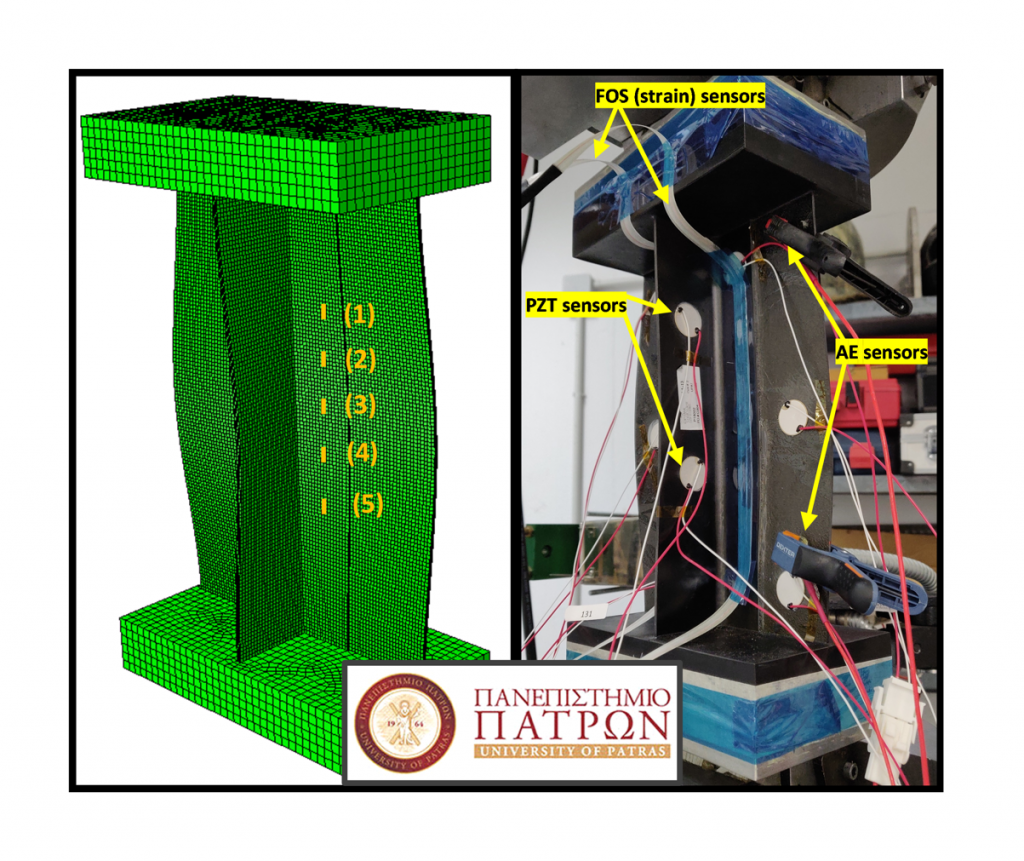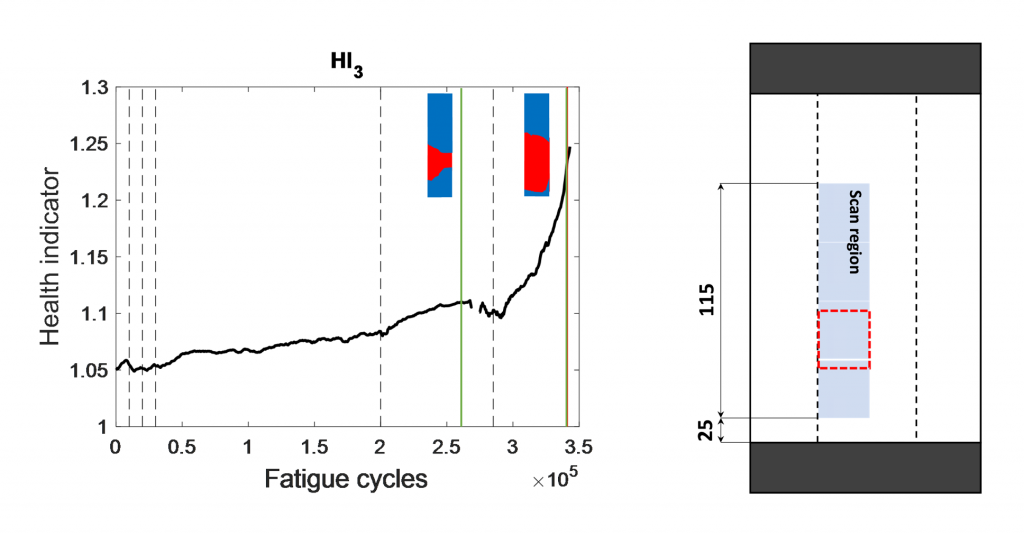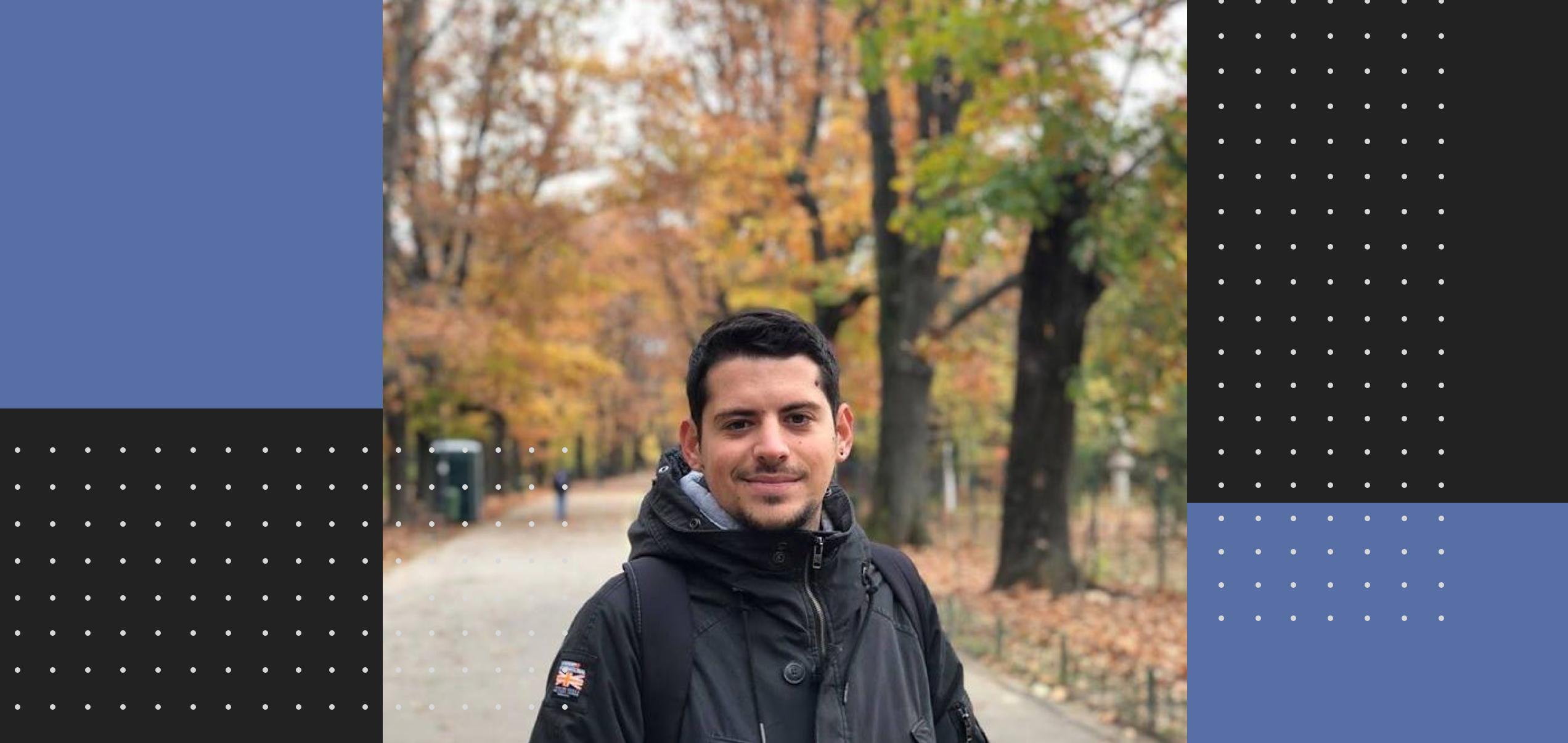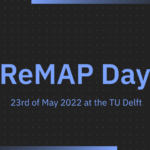Author: Dimitrios P. Milanoski
When you have pain, you go to a doctor. You tell the doctor where you feel the pain and how bad this is, say on a scale from 1 to 10. In our body the nervous system provides indications which are interpreted by our senses as pain. Similarly, we envisage to utilize permanently attached sensors to structures that will play an equivalent role to the human nervous system. In my research I study how does structural defects modify the strain field in their proximity. In the present work, a Health Indicator (HI) based on static strains, experimentally acquired from attached sensors, is evaluated for the case of an aeronautical composite stiffened panel imposed in post-buckling fatigue cyclic loading.
Pain caused by structural defects
On top of that, I investigate how the developed strain distribution on the surface of a structural element reveals this pain on the ‘patient’. My patient looks like this (below-left picture), a composite single stiffened panel as produced by Optimal Structural Solutions Lda. On it you see the yellow marks indicating the strain sensors provided by Smartec SA. The test articles contained a rectangular artificial disbond in the skin/stringer interface.

Τhe induced strains are obtained from a finite element model (FEM), as published in my earlier article, as well as from real experiments via fiber optic (strain) sensors (FOS). Several health indicators are studied which are based on the developed strain and should alarm maintenance engineers when predetermined thresholds are violated.
Experimental evidence and future work
The specimen of the relevant work was imposed to cyclic loading conditions, i.e. compression-compression fatigue spectrum. Strain data are acquired during quasi-static test intervals every 500 fatigue cycles. Gradually, propagation of the nominal disbond was occurred and the behaviour of the indicator was monitored. In-situ non-destructive measurements with a commercial DolphiCam ultrasound camera provided sparing evidence of the actual extend of the delaminated region, as shown below for one pair of sensors.

The authors are currently dedicated to enhancing the present approach by acquiring knowledge regarding the disbond morphology, following the Digital Twin concept. Contemporary supervised machine learning techniques, e.g. surrogate modelling, are utilized for training purposes with strain data solely obtained from the validated FEM of the structure.
Read all about the details in this paper as published at the ‘Special Collection of the European Workshop on Structural Health Monitoring 2020 (EWSHM2020)’.






